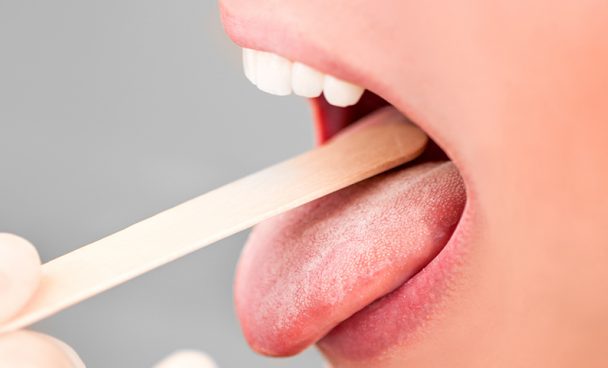Oral cancer is a malignant tumor that affects the lips and mouth structures such as gums, cheeks, roof of the mouth, tongue and the area under the tongue. INCA (National Cancer Institute) estimates that for each year of the 2020/2022 triennium, 15,190 new cases of oral and oropharyngeal cancer are diagnosed in Brazil (11,180 in men and 4,010 in women).
The main histological type of oral cancer is squamous cell carcinoma (90% of cases). It begins in the cells that form the lining of the mouth, and can be classified as “in situ” (only present on the surface) or invasive, when it has reached deeper layers.
The risk factors associated with cancer in the oral cavity are:
- Smoking – increases the risk of developing mouth cancer by 10 times;
- Excessive alcohol consumption – evidence shows that acetaldehyde, the main and most toxic metabolite of alcohol, disrupts DNA synthesis and repair and therefore may favor carcinogenesis. People who consume alcoholic beverages in high amounts may also have diets lacking in essential nutrients such as folate, making target tissues more susceptible to the carcinogenic effects of alcohol; and
- Poor oral hygiene – makes the oral cavity more susceptible to the carcinogenic effects of the above factors.
Symptoms of mouth cancer
It is important to mention that many of the symptoms or signs of mouth cancer are also associated with benign problems. Therefore, at any sign it is important to consult a doctor or even a dentist to evaluate the place.
The signs and symptoms of mouth cancer can include:
- Wound in the mouth that does not heal;
- Pain in the mouth that does not go away;
- Lump or swelling in the cheek;
- White or red spot somewhere in the oral cavity;
- Sore throat or feeling like something is stuck in your throat;
- Difficulty chewing or swallowing;
- Difficulty moving the jaw or tongue;
- Numbness in the tongue or other area of the mouth; and
- Nodule or mass in the neck.
Oral cancer diagnosis
The diagnosis of oral cavity cancer can be made with clinical examination, but confirmation depends on biopsy, which can often be done with local anesthesia in the clinic. The collected material is sent for histopathological analysis.
Once the disease is confirmed, other tests are performed to define the extent (stage) and the best treatment. It may include:
- Computed tomography or magnetic resonance imaging: provides important information regarding the extent of the affected structures, as well as assisting in the differential diagnosis with benign lesions;
- PET/CT: performed in some cases to assess whether there are disease-related lesions in other organs (metastases);
- Blood tests: blood tests cannot diagnose tumors of the mouth. However, they are asked to assess the patient’s general health status, especially before treatment; and
- Dental exam: before radiotherapy treatment, the doctor may ask the patient for a preventive dental exam and, if necessary, perform teeth removal before starting treatment. In the event that part of the jaw or palate is removed, the orthodontist will work to ensure that the artificial teeth and remaining natural teeth fit together correctly.
Treatment
The treatment of oral cancer, in most cases, is surgical, both in smaller lesions, with less functional repercussion, and in larger tumors. Radiotherapy and chemotherapy may be indicated to complement surgical treatment or when surgery is not possible (irreversible disease).
Surgery usually involves removing the tumor and also removing the lymph nodes from the neck. In major surgeries, resection of bone segments may be necessary. Other procedures can also be performed in a second stage to restore function to the resected area.
The last few years have been of evolution in the treatment of oral cancer, which now includes:
- IMRT radiotherapy: is a type of radiotherapy that has greater precision when it comes to treating the tumor. Therefore, the patient has fewer side effects and the results are more expressive;
- Targeted therapy: These are drugs that work differently from standard chemotherapy. They tend to have different (and less serious) side effects and work by preventing the tumor cell from multiplying, slowing down or even stopping the growth of cancer cells. This therapy may be combined with radiation therapy for some early-stage cancers or with chemotherapy for advanced cases; and
- Immunotherapy: this type of treatment increases the activity of the patient’s defense cells to fight the disease. It can be used combined or not with chemotherapy, depending on the patient’s clinical characteristics and the expression of PDL1, which is a protein present on the surface of the tumor.
Prevention
The best way to prevent oral cancer is to avoid its main risk factors – thus, it is recommended not to smoke, not to consume alcohol in excess and to maintain good oral hygiene.
